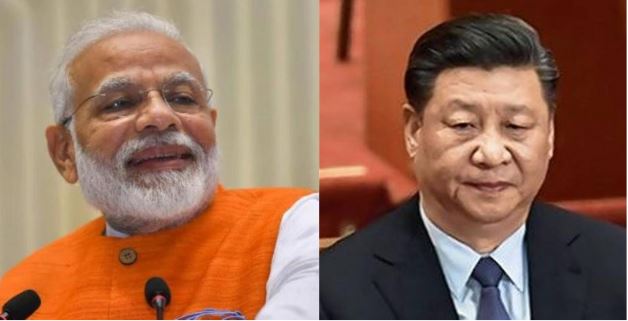When it comes to the maritime tussle between India and China, the past one decade has been all about the “String of Pearls”- Beijing’s strategy of jeopardising India’s interests in her own vicinity by building naval bases in the strategically located points of the Indian Ocean Region.
The Dragon has been concentrating on the Strait of Malacca, Sri Lanka, Pakistan, the Maldives and the Strait of Hormuz in order to checkmate India in the area of its traditional influence, viz. the Indian Ocean Region (IOR). But now tables have turned, as New Delhi has signed military logistics pact with the US, France, South Korea, Singapore and Australia to encircle China with its own string.
Over the past few years, India has been countering China’s attempts to build a “String of Pearls” around India. Therefore, India thwarted Beijing’s attempts to debt-trap the Maldives and Sri Lanka- strategically located island countries in the Indian Ocean.
As for China’s Gwadar port in Pakistan, India was able to seal the Chahbahar port in Iran that counters Chinese presence in the region. This also ensures that New Delhi is able to keep an eye on Strait of Hormuz- the busiest sea route for transporting oil in the world.
As for the Strait of Hormuz, India is also eyeing the port of Duqm in Oman that lies along the all-important choke point in the Indian Ocean Region (IOR).
As for the Strait of Malacca, India is developing a deep-sea port in Indonesia’s Sabang, not far away from India’s Andaman and Nicobar Islands. The port will bring India close to the Strait of Malacca and nullify increasing Chinese presence near the Strait that controls roughly a quarter of all oil transported by Sea. The port is a key factor in New Delhi’s IOR strategy.
The Modi government has managed to thwart Beijing’s attempts of encircling India in the Indian Ocean Region (IOR), and now the focus is moving towards encircling the Dragon in the Indo-Pacific region is instead.
India has been signing reciprocal logistics support pacts with like-minded countries that believe in freedom of navigation in the Indo-Pacific region with an aim to counter Chinese expansionism that tends to destroy freedom of navigation in the international waters.
India has already signed such agreements with Australia, the US, France, South Korea and Singapore. And now New Delhi is all set to ink a logistics support agreement with Japan.
The logistics sharing pact, once finalised will give the Indian Navy access to the Northern approaches of the Western Pacific Region, where Indian warships will be able to avail of refuelling and maintenance facilities. India already has such a logistics support pact with South Korea- another country in the Region that is geographically close to China and is separated only by the tiny landmass of North Korea.
On the Southern side, India has gained a major advantage with the Mutual Logistics Support Agreement (MLSA) that New Delhi and Canberra signed during the virtual summit between PM Modi and Australia’s PM Scott Morrison. With this agreement, Indian warships can access the region South of Indonesia, viz. the Southern Indian Ocean and the Southern approaches of the Western Pacific Region.
The region South of the Indonesian Straits is crucial for India as China is trying to expand its strategic footprint in this part of the IOR.
As far as the Middle East region is concerned, China’s first overseas military base became operational in Djibouti in 2017 which happens to be critical because Bab el-Mandeb, a narrow passage happens to pass through between the Horn of Africa (Djibouti) and the Middle East (Yemen) respectively.
But India has also signed the Logistics Exchange Memorandum of Agreement (LEMOA) with the US that gives India refuelling facilities and access to American base in Djibouti and the pact inked with France in 2018 gives the Indian warships access to French bases in the Reunion Islands situated near Djibouti on the Horn of Africa.
With these agreements therefore India is enhancing the crucial role that it has to play in the Indo-Pacific Region. With passage of time, this can also easily translate into India expanding its presence in the international waters of the South China Sea when like-minded Quad partners- Japan, Australia and the US firmly stress upon the importance of freedom of navigation in these waters.
In this sense also, India benefits from access to the American military bases in the Guam Island in the Western Pacific Ocean and Subic Bay in the Philippines- both of which are strategically crucial in curtailing Chinese expansionism in the international waters of South China Sea far away from Chinese territory.
The People’s Liberation Army (PLA) Navy is a Green-water Navy and wants to exert influence beyond its local range in order to become an influential, Blue-water Navy but now New Delhi is trying to play spoilsport and has effectively encircled the Dragon on all littoral fronts from where it wants to expand influence.
And for this purpose, India doesn’t have to debt-trap with small island countries, it is capitalising upon the extensive goodwill that it has built with the countries in the Indo-Pacific all this while. The mutual logistics support agreements have thus heralded a new era in New Delhi’s Indo-Pacific strategy.
